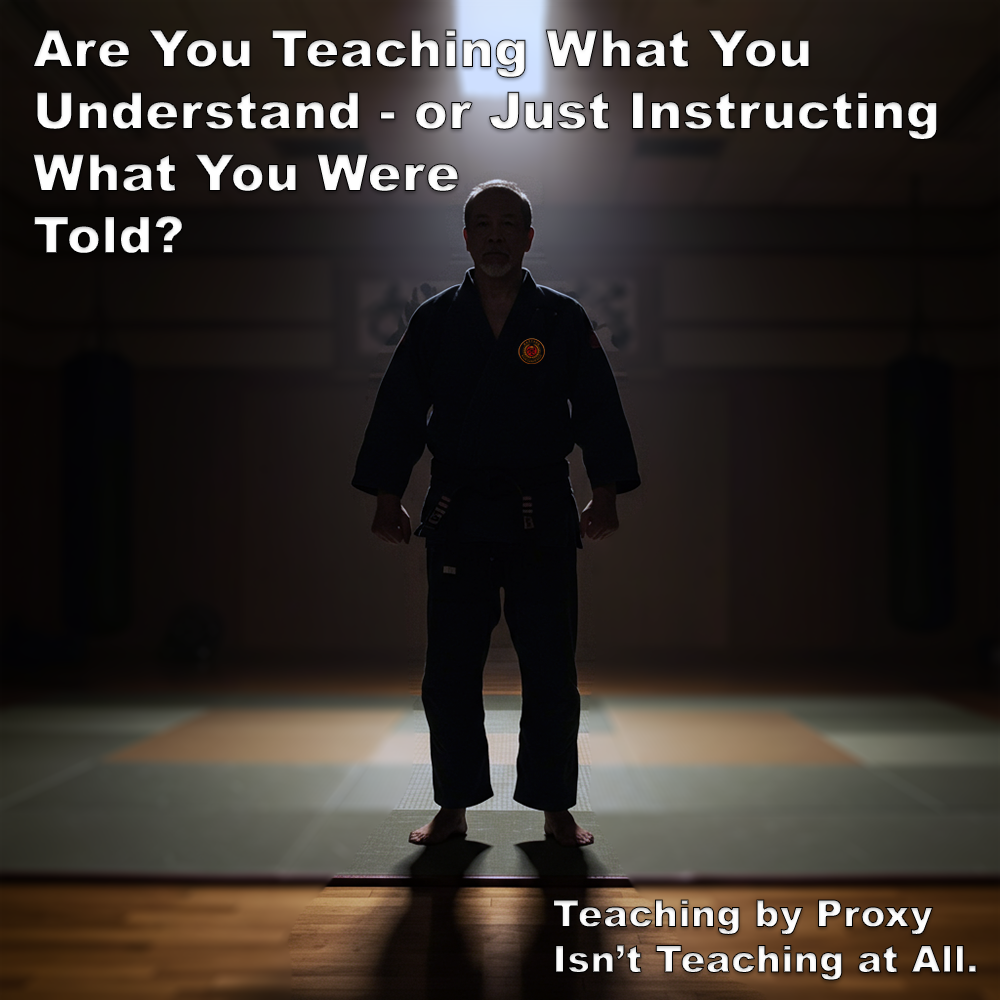
(Approx 2 minute 15 second read)
There’s a difference between asking a question and asking someone else to do your thinking for you – especially when it comes from someone you don’t know.
.
Lately, I’ve been receiving messages from instructors – some new to teaching, others with different backgrounds – asking how I approach certain areas of training. How do I pressure test in the dojo? How do I make traditional material more realistic? What drills do I use to prepare students for real-world violence? And more.
.
Now, I don’t mind sharing ideas. I write often, and I’ve always seen value in encouraging thought and reflection. And I understand that seeking guidance – when done respectfully and thoughtfully – can be an important part of progress.
.
We all benefit from those kinds of exchanges. But that’s not what this is.
.
More and more, the messages I receive feel like something else entirely. They come from people I’ve never met, with no introduction – just a demand for answers. Often from those calling themselves instructors. And all of it on my Page that I’ve made clear is not a forum, but a place for sharing my thoughts and ideas – not a free seminar, I don’t have time for back and forth question and answers.
.
Rather than experiment, adapt, or take a hard look at what they’re doing, they ask how I do it. That’s not guidance they’re after – it’s a shortcut.
.
There’s a difference between learning from others and leaning on them to shape your method. If you can’t look critically at what you’re passing on – if you’re not willing to take responsibility for how and what you teach – then you’re not really teaching. You’re repeating.
.
And here’s the uncomfortable bit: if you don’t have the answers in your system, and you know that, why stay in it? If your method doesn’t provide what you believe is essential – like realistic training or practical understanding – then why not go find something that does? If you stay where there are no answers, that’s not loyalty – it’s stagnation.
.
It’s easy to talk about combatives, realism, and pressure testing. It’s harder to deliver those things responsibly and consistently.
.
That takes experience and effort. It doesn’t come from collecting drills or quoting other instructors online.
.
Teaching is a responsibility. It’s not enough to wear a black belt or have just a few years of experience. You’ve got to think. You’ve got to understand. You’ve got to own what you pass on. And you can’t do that by copying someone else’s answers in a comment thread.
.
This is where we see the difference between an instructor and a teacher. An instructor might run drills or bark commands. A teacher understands who they’re working with. If you can’t adapt your approach – if you can’t change the tone without losing the essence – you’re not teaching. You’re just repeating what worked in a different world, for a different purpose.
.
That’s not what most people need.
.
I don’t say this to lecture. In the end, it’s not about what someone else teaches – it’s about how well you understand what you’re passing on.
.
Are you teaching what you understand – or just instructing what you were told?
.
.
Written by Adam Carter
